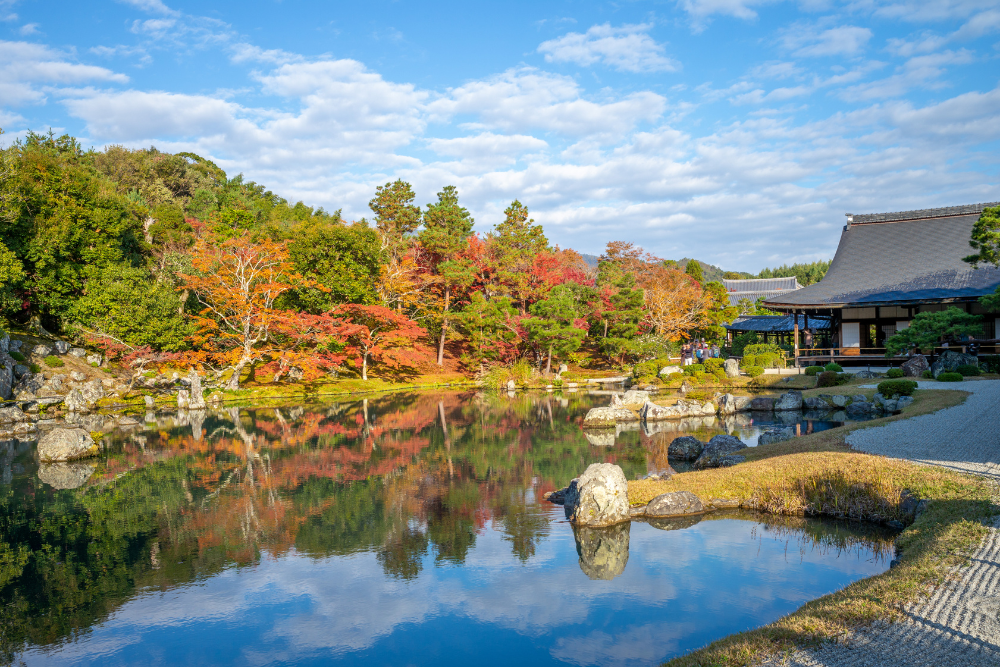Tokyo is often seen as a fast-paced metropolis filled with neon lights, towering skyscrapers, and bustling crowds. However, hidden among the city’s modern structures are tranquil gardens that offer a peaceful retreat from the urban energy. While famous spots like Shinjuku Gyoen and the Imperial Palace Gardens attract many visitors, there are lesser-known green spaces that provide a serene escape.
This guide explores some of Tokyo’s best hidden gardens, perfect for those seeking a quiet moment in nature.
1. Kiyosumi Teien
Where: Koto City
Why Visit?
Kiyosumi Teien is a traditional Japanese strolling garden featuring a central pond, carefully placed stepping stones, and seasonal flora. Originally built in the Edo period, it was later restored by the founder of Mitsubishi in the 19th century. The garden is home to koi fish, turtles, and beautifully arranged rocks sourced from across Japan.
Highlights:
- Scenic walking paths with carefully designed landscapes
- Seasonal beauty, including cherry blossoms in spring and vibrant maple leaves in autumn
- Tea house overlooking the pond for a quiet moment of reflection
2. Rikugien’s Hidden Corners
Where: Bunkyo City
Why Visit?
While Rikugien is not entirely hidden, many visitors stick to its main paths, overlooking its quieter corners. This Edo-period strolling garden was designed to reflect poetic landscapes, offering winding trails, small bridges, and secluded seating areas.
Highlights:
- Lesser-known side paths leading to peaceful resting spots
- Beautiful contrast of moss-covered stones, water features, and seasonal flowers
- Nighttime illuminations in autumn, when the maple trees glow in shades of red and gold
3. Higo-Hosokawa Garden
Where: Mejirodai, Bunkyo City
Why Visit?
Once the residence of a samurai family, Higo-Hosokawa Garden remains an undiscovered gem for most travelers. It features a pond-centered landscape, small waterfalls, and traditional wooden pavilions. With fewer crowds than other Tokyo gardens, it provides a true sense of seclusion and tranquility.
Highlights:
- Stone pathways leading to hidden viewpoints
- A charming tea house with a view of the pond
- A mix of traditional Japanese landscaping and natural woodland areas
4. Kyu-Shiba Rikyu Garden
Where: Minato City
Why Visit?
Often overshadowed by nearby Hamarikyu Gardens, Kyu-Shiba Rikyu offers a quieter alternative with well-manicured greenery, a central pond, and scenic bridges. Once an imperial garden, it retains its historical charm while being one of the least crowded gardens in central Tokyo.
Highlights:
- A harmonious balance of rocks, water, and plants
- Panoramic views of modern skyscrapers contrasting with traditional garden elements
- Ideal for those who appreciate carefully maintained landscapes without large crowds
5. Mukojima-Hyakkaen Garden
Where: Sumida City
Why Visit?
This Edo-period flower garden remains one of Tokyo’s best-kept secrets. Unlike the more structured gardens in the city, Mukojima-Hyakkaen focuses on seasonal flowers and natural beauty rather than perfectly trimmed landscapes.
Highlights:
- A bamboo grove and a shaded walking path
- Seasonal flowers, including wisteria, plum blossoms, and irises
- A quiet retreat close to the Sumida River, away from the busy Asakusa area
6. Todoroki Valley
Where: Setagaya City
Why Visit?
For a completely different kind of hidden garden, Todoroki Valley offers a lush, green escape within the city. This natural gorge with a stream running through it feels like a world away from Tokyo’s urban landscape.
Highlights:
- A peaceful walking trail along a small river
- A hidden bamboo grove and small shrines
- Cool, shaded areas that provide relief during the hot summer months
7. Koishikawa Korakuen’s Lesser-Known Corners
Where: Bunkyo City
Why Visit?
Koishikawa Korakuen is one of Tokyo’s oldest gardens, but its hidden pathways and quiet seating areas make it easy to find a peaceful retreat. Inspired by both Chinese and Japanese landscaping techniques, the garden features bridges, ponds, and winding trails.
Highlights:
- Unique bridges, including the iconic Full Moon Bridge
- A pond that reflects the changing seasons, from cherry blossoms to autumn foliage
- Less crowded areas toward the back of the garden, perfect for quiet contemplation
Conclusion
Tokyo’s hidden gardens provide a rare opportunity to step away from the city’s fast pace and immerse yourself in nature, history, and tranquility. Whether you prefer the carefully designed landscapes of Kiyosumi Teien, the seasonal beauty of Mukojima-Hyakkaen, or the natural retreat of Todoroki Valley, these quiet escapes offer a different perspective of Japan’s capital.
For those looking to explore Tokyo beyond its well-known attractions, these gardens offer a peaceful and authentic experience, perfect for relaxation and reflection.












